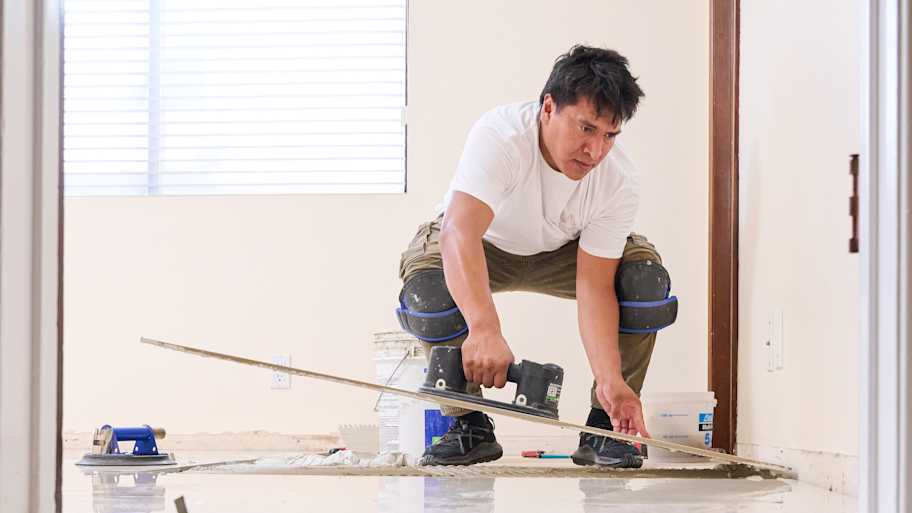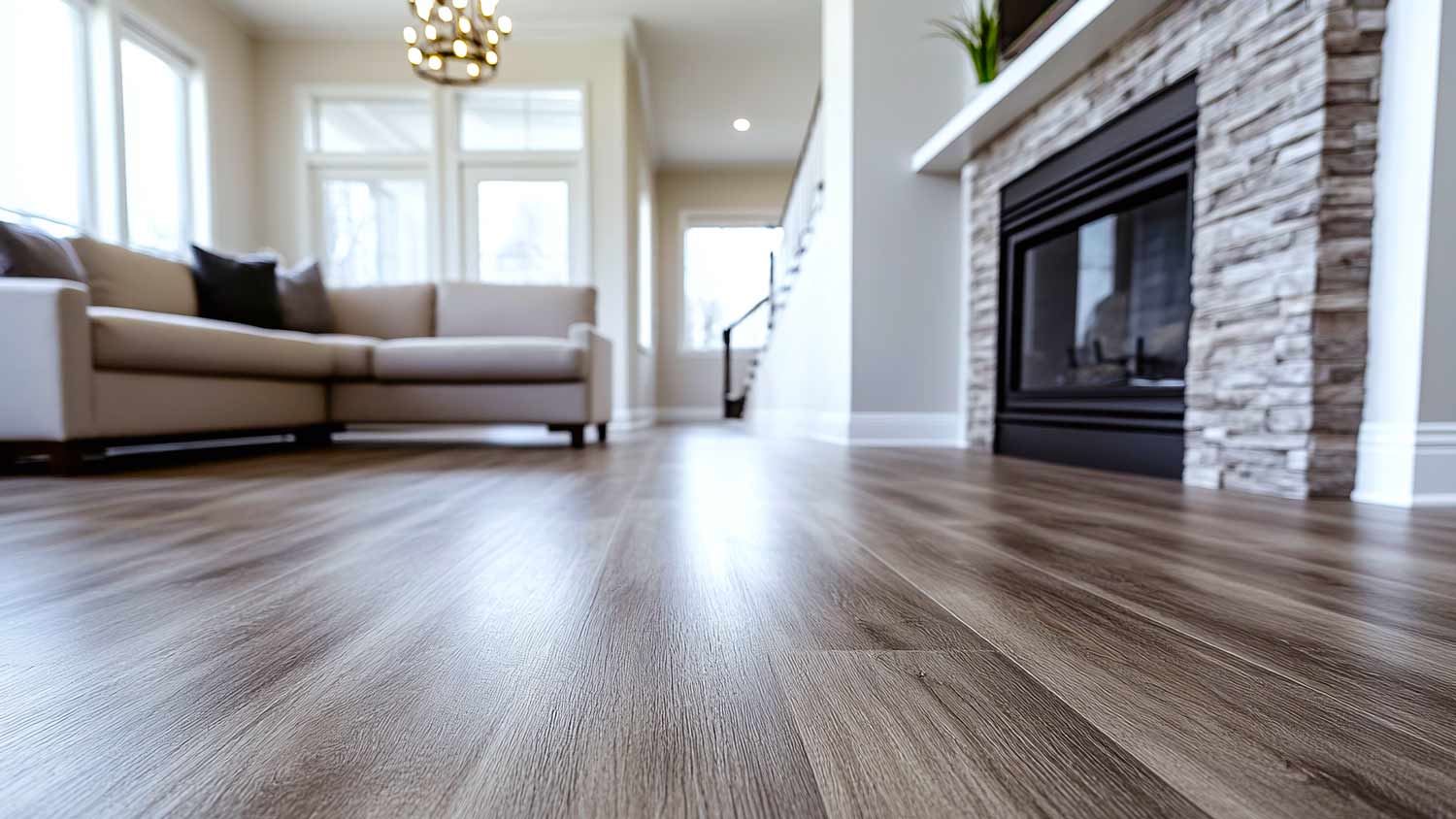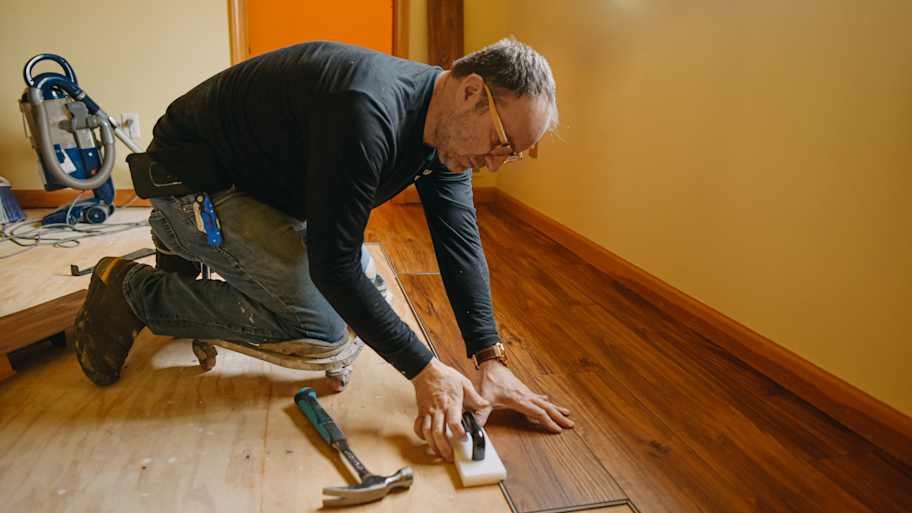Is Laminate Flooring Toxic to You and Your Family?
Overexposure to formaldehyde can increase your risk of health problems like cancer


Formaldehyde is a toxic health hazard found in laminate flooring and other products.
Formaldehyde is a bonding agent in many household items.
It is a carcinogen that can also cause allergy- and asthma-like symptoms.
Risks are greatest immediately after installation and can continue for years.
Prevent exposure with testing, airing out your home, and buying low-VOC products.
Do you love the look of your laminate wood flooring but worry it’s a toxic health hazard? You’re not alone. Countless studies show a link between the formaldehyde in laminate flooring and other household products and increased rates of respiratory issues, allergies, asthma, and even certain cancers. Here’s what you need to know about laminate floors containing formaldehyde.
What Is Formaldehyde?
Formaldehyde is a flammable and colorless gas composed of simple compounds like hydrogen, oxygen, and carbon. If you’ve ever opened a bottle of nail polish or cracked open a can of fresh paint, then you’ve likely smelled formaldehyde’s strong, infamous odor.
Formaldehyde is a preservative in medical products because of its fungicide, germicide, and disinfectant properties. Manufacturers also use the substance as a building block for bonding glues in the building and construction industry.
Which Home Products Contain the Most Formaldehyde?
Since formaldehyde works so well as a bonding agent, many products you might consider for your next project may contain this ingredient. In fact, you can find formaldehyde in flooring and all kinds of household items and materials.
According to the Environmental Protection Agency (EPA), here are some of the most common products to contain formaldehyde:
Wood resins
Building materials
Faux wood flooring
Insulation
Household glues
Paints, stains, lacquers, and finishes
Makeup, medicine, and washing liquids
Furniture
Fertilizers and more
Is Formaldehyde in Laminate Flooring Dangerous?
The Centers for Disease Control and Prevention (CDC) released test results in 2016 that revealed the hazardous, high levels of formaldehyde in certain laminate wood flooring originating from China. However, the dangers of formaldehyde in flooring were established far before then.
The EPA declared formaldehyde as a probable carcinogen in 1987. Later studies have shown increased cancer rates in those exposed to formaldehyde in the workforce and other health problems in humans. The International Agency for Research on Cancer (IARC) determined formaldehyde to be carcinogenic to humans in the early 2000s.
Health Risks of Formaldehyde in Laminate Wood Flooring
Acute exposure to formaldehyde can cause several symptoms, including:
Allergy-like symptoms: Eye, nose, and throat irritation are common ailments among allergy sufferers, but these symptoms may signal formaldehyde exposure if you recently installed laminate flooring.
Asthma-like symptoms: Coughing, wheezing, and lung symptoms may also occur or worsen in those with asthma.
Cold- and flu-like symptoms: You might experience watery or burning eyes, nose, and throat symptoms that resemble a cold.
Many people wonder, does laminate flooring cause cancer or other serious health problems? Studies have shown that long-term exposure to formaldehyde can cause more severe and chronic health problems, according to the Centers for Disease Control and Prevention. Health issues include:
Increased risk of nasal, sinus, throat, and lung cancer
Reproductive or developmental effects
Asthma-like respiratory problems
When Are Formaldehyde Exposure Risks Highest?
Two types of laminate flooring are subject to the EPA’s proposed regulations: hardwood plywood and laminate flooring created by a formaldehyde-based resin that attaches a wood veneer to a composite wood platform.
While your laminate flooring must meet regulation standards, you’re still at risk of overexposure if you’re in contact with multiple sources of formaldehyde. For instance, if you make formaldehyde products or use such products regularly in your work, you are more vulnerable to overexposure. That’s why there’s more regulation for businesses that regularly work with formaldehyde-based products, as per OSHA requirements.
You should also keep in mind that products containing formaldehyde are most prone to emissions when new. According to the EPA, the emissions dissipate over time, so the older the floor installation in your home, the lower the levels of formaldehyde it will likely emit. If you’re still concerned about your laminate wood flooring and the risks it may pose to your health and the health of your family members, learn about the cost to remove laminate flooring and replace it with something less toxic.
Testing Your Laminate Floors for Formaldehyde
It can be difficult to know whether your laminate flooring contains toxic materials such as formaldehyde, especially if you didn’t choose or install the material yourself or know other basic information, like the manufacturer. Generally, you don’t need to test your flooring unless you notice something off, like if you’re experiencing respiratory issues or notice a chemical smell. Experiencing respiratory symptoms while only in the home is another indicator, but it can be difficult to determine which products potential formaldehyde could be coming from.
While there are DIY formaldehyde testing kits on the market, there has been no verification as to their accuracy and validity by the EPA. You can send a sample of your floor to a lab, but this form of testing is expensive. Some homeowners also choose to test their indoor air quality.
How to Shop for New Laminate Flooring With Formaldehyde in Mind

The best way to lower your exposure to formaldehyde is to know what’s in the products you use in and around your home. In 2016, the EPA made a final ruling on national standards for formaldehyde through the Formaldehyde Standards for Composite Wood Products Act to help you identify such products.
This act is a voluntary label that companies can use to indicate whether or not manufactured products meet the EPA’s standards for toxic substances control. Look for products labeled or stamped in compliance with these standards to be on the safe side.
At the same time, there are other green laminate flooring indicators that you can use to determine which laminate floorings contain less formaldehyde:
GreenGuard certification
Ultra-low emitting formaldehyde features
“No added urea-formaldehyde” on the label
And labels in compliance with the California Air Resources regulations
Call a local laminate floor installer near you who can answer questions about which products contain the least formaldehyde.
Preventing Formaldehyde Exposure in Laminate Flooring
It’s hard to avoid bringing any formaldehyde-based products into your home. However, you’re less likely to get skin, nose, throat, and lung irritation if you have less concentration inside the house or use preventative measures.
These tips will help reduce your exposure to formaldehyde:
Air it out: It’s important to air out your new laminate flooring or any materials that contain formaldehyde, for that matter!
Mask up: Yes, part of reducing your exposure might mean pulling out the old facemask for a few days to prevent inhaling byproducts, especially since formaldehyde can negatively impact indoor air quality.
Search for low-VOC flooring: While most laminate flooring contains formaldehyde as an adhesive, this doesn’t mean you can’t find ways to curb the emissions. Search for eco-friendly laminate flooring by keeping an eye out for the green standards we went over up above.
Allie Ogletree contributed to this piece.
The flooring that is the least toxic is solid wood. Natural linoleum, tile, stone, bamboo, and cork flooring also make the list of least-toxic flooring types. These flooring materials are safer and healthier for your home because they are natural materials that aren’t manufactured with chemicals, unlike laminate flooring. While some laminate flooring brands are made with less formaldehyde, many contain high levels of toxic chemicals that can off-gas in your home for months and years after installation.
Choosing natural flooring materials that are easy to clean without chemical cleansers can also help keep your home safer.
If you’re wondering which is more toxic, laminate vs.vinyl flooring, you might be surprised to learn that both can include toxic chemicals. Depending on the specific brand and the manufacturing process, both are likely made from synthetic materials that can emit volatile organic compounds, or VOCs, into the air. However, since laminate has a wood core, it is more sustainable and less polluting than vinyl, which is entirely synthetic and almost always emits more VOCs than laminate flooring. If you’re concerned about indoor air quality, choose a low-chemical flooring manufacturer or, better yet, choose flooring that doesn’t off-gas VOCs.
Laminate flooring off-gasses for an average of six months to two years, depending on how high the formaldehyde levels are in the original product. Some highly toxic brands of laminate flooring can off-gas for even longer. Exposure to VOCs, including formaldehyde, can cause coughing, shortness of breath, and irritation in the eyes and respiratory system. While laminate flooring and other types of flooring that off-gas chemicals slowly release chemicals over time, so the risk of irritation and poor indoor air quality is worse at first, the chemicals can hang around your home for years.















